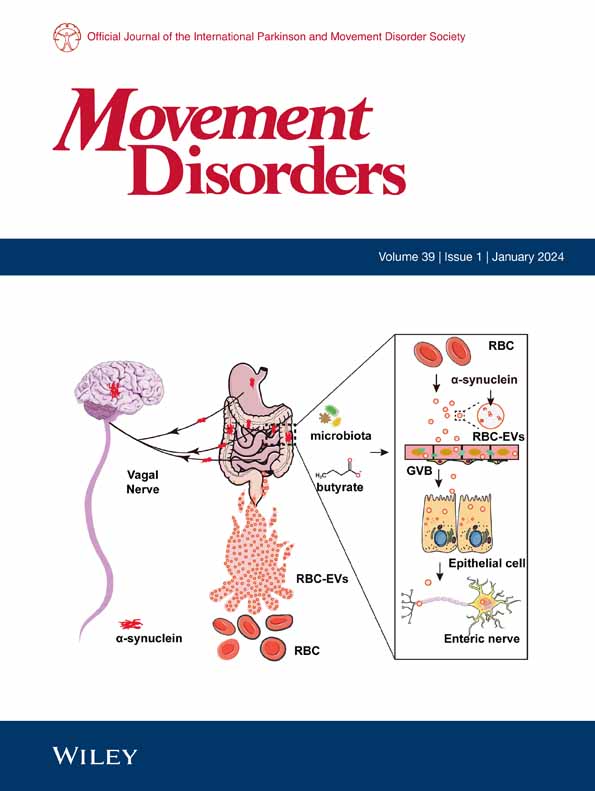遗传性和获得性儿童小脑疾病的表型异质性。
IF 7.4
1区 医学
Q1 CLINICAL NEUROLOGY
引用次数: 0
摘要
背景:芬兰儿童小脑疾病(PCDs)的遗传格局尚不明确。目的:目的是确定芬兰北部PCDs的流行病学、临床、神经放射学和遗传特征。方法对患有运动障碍或小脑畸形的儿童(诊断≤16岁;研究期间为1970-2022年)在芬兰奥卢大学医院的三级集水区进行。将基因型与表型的关联与1007例具有匹配单基因病因的已发表病例进行比较。结果共纳入107例患者(累计发病率为21.9 / 10万活产)。59例患者确定了明确的遗传或非遗传病因。这些病因是单基因(66%)、染色体(12%)或非遗传(22%)。共济失调是最常见的运动障碍。弗里德赖希的共济失调并不常见,而属于芬兰疾病遗产的共济失调则被过度代表。48例仍未确定。新一代测序(NGS)对共济失调的诊断率(即致病或可能致病的变异)为65%。常见的特征是共济失调、发育迟缓、癫痫发作、张力减退和脑MRI异常,而听力损失、感觉神经病变和小头症的病因较少。结论spcd是一种异质性疾病,遗传病因占比高。发病年龄和某些临床表现可能有助于区分不同的疾病实体。NGS的诊断率随着时间的推移而增加。我们的数据集将支持临床医生识别PCDs、其合并症和遗传病因。关于流行病学、共同疾病机制和PCDs自然历史的进一步数据对于开发治疗方法至关重要。©2025国际帕金森和运动障碍学会。本文章由计算机程序翻译,如有差异,请以英文原文为准。
Phenotypic Heterogeneity in Genetic and Acquired Pediatric Cerebellar Disorders.
BACKGROUND
The genetic landscape of pediatric cerebellar disorders (PCDs) in Finland is undefined.
OBJECTIVES
The objective was to define epidemiological, clinical, neuroradiological, and genetic characteristics of PCDs in Northern Finland.
METHODS
A longitudinal population-based cohort study of children with a movement disorder or a cerebellar malformation (diagnosis ≤16 years; study period 1970-2022) was performed in the tertiary catchment area of the Oulu University Hospital, Finland. The genotype-to-phenotype associations were compared with 1007 published cases with matching monogenic etiologies.
RESULTS
A total of 107 patients were included (cumulative incidence 21.9 per 100,000 live births). A defined genetic or non-genetic etiology was identified for 59 patients. These etiologies were monogenic (66%), chromosomal (12%), or non-genetic (22%). Ataxia was the most common movement disorder. Friedreich's ataxia was uncommon, whereas ataxias belonging to the Finnish Disease Heritage were overrepresented. Forty-eight cases remained undefined. The diagnostic yield (ie, pathogenic or likely pathogenic variants) of next-generation sequencing (NGS) in ataxia was 65%. Common features were ataxia, developmental delay, seizures, hypotonia, and abnormality in brain MRI, whereas hearing loss, sensory neuropathy, and microcephalia were associated with fewer etiologies.
CONCLUSIONS
PCDs are a heterogeneous disease group with a high proportion of genetic etiologies. Age of onset and certain clinical findings may help distinguish between different disease entities. The diagnostic yield of NGS has increased over time. Our dataset will support clinicians to recognize PCDs, their co-morbidities, and genetic etiologies. Further data on epidemiology, shared disease mechanisms, and the natural history of PCDs will be critical for the development of treatment approaches. © 2025 International Parkinson and Movement Disorder Society.
求助全文
通过发布文献求助,成功后即可免费获取论文全文。
去求助
来源期刊

Movement Disorders
医学-临床神经学
CiteScore
13.30
自引率
8.10%
发文量
371
审稿时长
12 months
期刊介绍:
Movement Disorders publishes a variety of content types including Reviews, Viewpoints, Full Length Articles, Historical Reports, Brief Reports, and Letters. The journal considers original manuscripts on topics related to the diagnosis, therapeutics, pharmacology, biochemistry, physiology, etiology, genetics, and epidemiology of movement disorders. Appropriate topics include Parkinsonism, Chorea, Tremors, Dystonia, Myoclonus, Tics, Tardive Dyskinesia, Spasticity, and Ataxia.
 求助内容:
求助内容: 应助结果提醒方式:
应助结果提醒方式:


